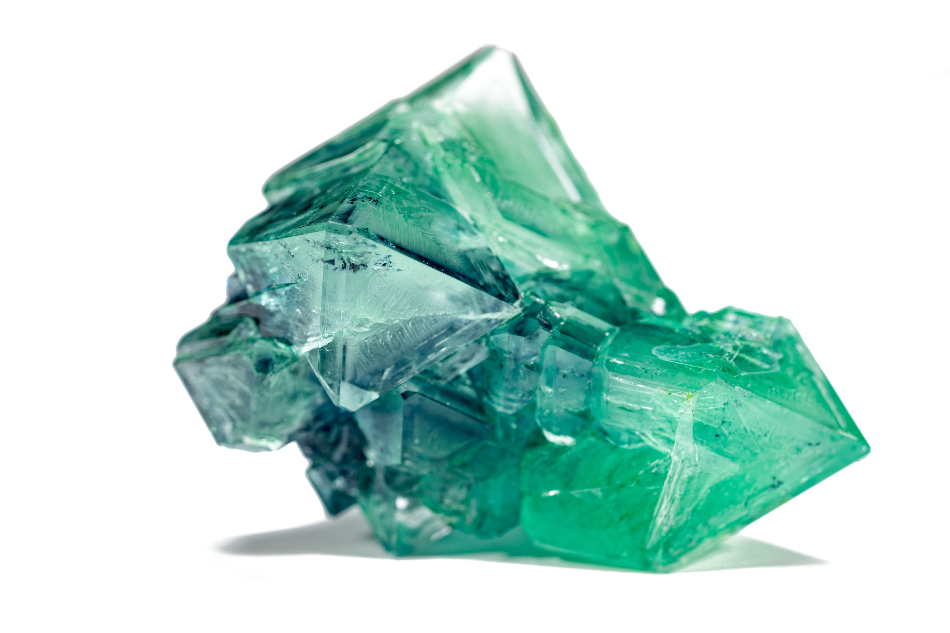
Science Photo / Shutterstock
Electron Microscopy is an extremely versatile tool, allowing the study of both morphology and material composition from all areas of science and technology. It is a method regularly used in the study of minerals. One of the key reasons for this extensive use is that electron microscopes provide extremely high-resolution images.
Electron microscopes generate a variety of signals that help to extend our understanding of geological samples. For example, a Scanning Electron Microscope (SEM), fitted with an Energy Dispersive Spectrometer (EDS), is often used for the analysis of various elements. The main signals generated by electron microscopes include back-scatter electron detection (BSE), secondary electron detection (SE), energy-dispersive X-ray spectroscopy, and X-ray mapping.
The SEM is equipped with a cryogenic stage, allowing for the preservation of fluid phases in the samples and analysis in situ if necessary. Typical samples analyzed by the EM include biological, geological, and fibrous.
Signals Generated by Electron Microscopes
- BSE detection allows researchers and analysts to visualize different phases and grains in polished geological samples. This is possible because the intensity of BSEs is directly proportional to the mean atomic number of the sample. BSE detection also allows for the automated measurement of grain size distributions, nearest neighbor distances, and phase coverage by area.
- Secondary electrons (SEs) are generally used to study the morphology of 3-dimensional materials. SE has an enhanced resolution and improved depth of field when compared to a BSE detector.
- X-ray spectroscopy is only applied at a later stage when the different regions of interest have been identified with the above two signals. X-ray spectroscopy can be used to quantify the elemental composition of the different phases.
- X-ray mapping is performed using Position-tagged Spectrometry (PTS). This is a method where X-ray photons generated by the scanning electron beam are tagged with the position of their origin. Data can then be extracted to form images, elemental maps, and spectra.
To demonstrate the power of electron microscopy in analyzing minerals, we can examine a recent case study carried out on Kurogaki (Diospyros kaki) trees in Japan.
Interactions between minerals and microorganisms play a crucial role in living wood tissues. However, living wood tissues had never previously been analyzed. In this study, scientists report on the characterization of kurogaki based on scanning electron microscopy equipped with energy-dispersive spectroscopy (SEM-EDS) and transmission electron microscopy (TEM) and associated with inductively coupled plasma-mass spectrometry (ICP-MS) analyses, X-ray fluorescence analyses (XRF) and X-ray powder diffraction (XRD) analyses.
The main aim of the study was to illustrate the ability of various microorganisms associated with biominerals within the wood tissues of kurogaki, as shown by SEM-EDS elemental content maps and TEM images.
Kurogaki is a plant that grows very slowly, has extremely hard wood, and is known for its striking black and beige coloration referred to as a “peacock pattern”. However, the scientific data for kurogaki are very limited. The “peacock pattern” of the wood mainly consists of cellulose and high levels of crystal cristobalite.
The chemical compositions of the black and beige portions of the black persimmon tree were obtained by ICP-MS analyses. Particular elements such as abundant Ca, Mg, K, P, Mn, Ba, S, Cl, Fe, Na, and Al were concentrated in the black region, associated with the Pb and Sr elements. SEM-EDS semi-qualitative analyses of kurogaki indicated an abundance of P and Ca in microorganisms in the black region, associated with Pb, Sr, S, Mn, and Mg elements.
On the other hand, XRF and XRD mineralogical data showed that fresh andesite, weathered andesite, and the soils around the roots of kurogaki, correlated with the biomineralization of the black region in kurogaki roots; showing clay minerals (kaolinite) and cristobalite formation.
The scientists describe how the biominerals in the black region of the cellulose within wood tissues grow chemically and biologically in the sap under the conditions associated with the beige portions of the taproot. This led to the explanation as to why the crystals produce the “peacock pattern” in the kurogaki trees.
The study showed that kurogaki microbiota originates from bacteria in the andesitic weathered soil environment that produces silicification. In other words, the patterned portions of kurogaki consist of silicified wood. This is an extremely interesting application of electron microscopy where researchers analyzed interactions of minerals and microorganisms.
Disclaimer: The views expressed here are those of the author expressed in their private capacity and do not necessarily represent the views of AZoM.com Limited T/A AZoNetwork the owner and operator of this website. This disclaimer forms part of the Terms and conditions of use of this website.